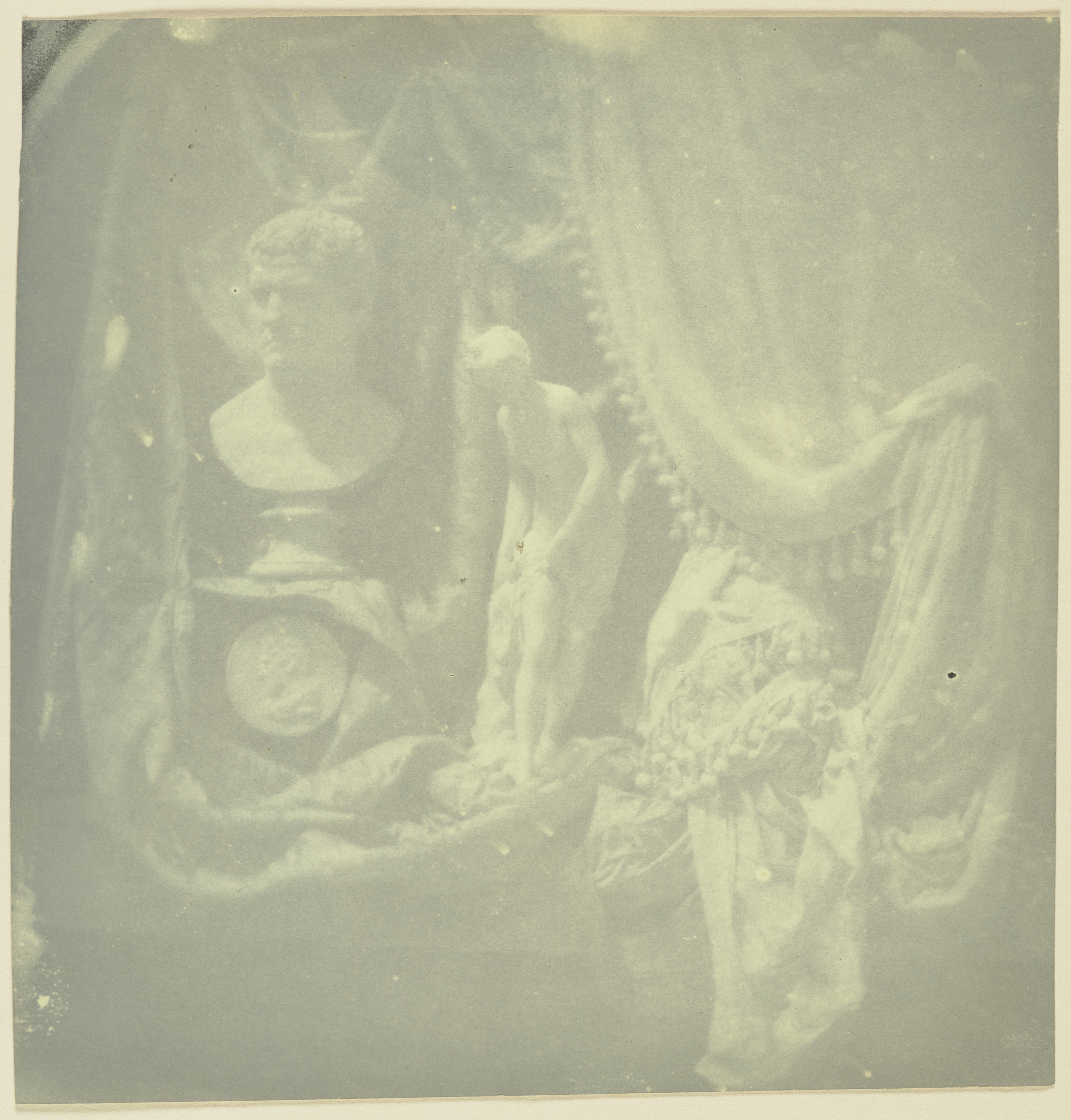Hippolyte Bayard was a pioneer of photography, though today few will recognize his name. Already in January of 1839, and perhaps even earlier, he had begun to experiment with light sensitive chemicals in search of a way to capture nature on ordinary writing paper. That very same month, François Arago announced Louis-Jacques-Mandé Daguerre’s invention of the daguerreotype at the Academy of Sciences in Paris and William Henry Fox Talbot made his photogenic drawing method public in London. Talbot slowly shared more details about his technique over the next few months, while Daguerre did not divulge his for another eight months. Arago, the perpetual secretary of the Academy of Sciences, most likely discouraged Bayard from making his direct positive process public until after Daguerre’s method had been fully revealed in August since the French government thought it best to recognize one countryman as the inventor of photography. Even though Bayard did not present details of his direct positive recipe to the Academy of Sciences until February 1840, he did begin sharing his results with Arago and with other scientists as well as artists more informally in the spring of 1839.
In an album of his early experiments,1 Bayard recorded that he made his first successful photographs on February 1st and 2nd, 1839. On March 20th he created the first direct positive. Though they are rare and very vulnerable to light, several of Bayard’s direct positive prints can be found in the Getty Museum’s collection. This early example shows a statuette of Venus at her bath, a bust of a Roman man, and a medallion of an unidentified man in profile.2 An inscription on the back of the print dates it to March or April of 1839.
Bayard used these same sculptures, along with the curtains and coverlet, in a number of his compositions. He artfully combined his more-than-forty plaster figures in a range of groupings, often displaying them at varying heights to fill the frame (see Groupe de quatre statues, un masque un médaillon et un bas-relief). At other times he made studies of individual figures on their own. (see Buste romain and La Vénus au bain). In the earliest days of photography it was impossible to record people because they would inevitably move during the long exposure time, causing their likenesses to be blurred or ghost-like. Thus, the plaster sculptures made perfect models for endless experiments due to their guaranteed stillness and their bright, defined surfaces.
To create a direct positive, Bayard first coated his sheet of writing paper with silver nitrate and sodium chloride to render it light sensitive. He placed the sensitized paper out in the sunlight and left it there until the entire sheet turned a very dark brown. Next he floated it in a bath of potassium iodide. Only then did he slide the damp sheet supported by a piece of slate or a wood frame into the back of the camera to make an exposure of his subject. Once the image had formed on the paper, he washed the sheet in hyposulfite to stop the developing process and then finally rinsed it in hot water.
The iodide bleached the different areas of the print proportional to how much light hit them. The highlights of the composition, such as the surfaces of the sculptures and the curtains, appeared a bright yellow or golden brown, while the darkest areas of the image, where little light infiltrated, remained a darker brown. Bayard aptly called the resulting image a “direct positive.” As the name implies, the light and dark values in the image are true to nature.
Because no negative was involved, each of Bayard’s direct positives was a unique image that could not be reprinted, thus making it similar to Daguerre’s impressions on metal plates. Talbot’s photogenic drawing process, on the other hand, initially created a negative paper print in which the lights and darks were reversed. In order to obtain the correct tones, another step was required in which this negative was placed directly atop a second sensitized sheet of paper and exposed to sunlight. The resulting second print—a positive—has a fidelity to the light and dark tones in nature. The important advantage of Talbot’s process was that one could make multiple prints from one negative.
By July of 1839, Bayard had made such great progress with his process that he became the first person to publicly exhibit his “photographic drawings” in a Parisian art exhibition to benefit victims of the January 1839 earthquake on the island of Martinique. In October, he submitted his work to the Academy of Fine Arts for close examination. The members of this academy were overwhelmingly enthusiastic in their review of his work, declaring that Bayard’s process held much promise as a tool for artists.3 They were particularly excited by the transportability of the light-weight sheets of paper and the ease of the process.
Bayard developed three other photographic methods between 1839 and 1846, none of these were significantly distinguishable from other photographers’ techniques. Although his direct positive process was never widely used by other photographers. Bayard remained active in the field of photography for three decades and consistently kept up with the rapidly changing technical advances in photography, often making use of processes by other inventors. He eventually partnered with another photographer known as Bertall (Charles Albert d’Arnoux, 1820-1882) to open a portrait studio in 1860.
- Carolyn Peter, J. Paul Getty Museum, Department of Photographs
-
This album is now owned by the Société française de photographie in Paris. ↩︎
-
These sculptures were identified by Michel Frizot in Michel Frizot, “Bayard en son jardin: l’obsession initiatique,” in Jean-Claude Gautrand, Hippolyte Bayard: Naissance de l’image photographique (Amiens : Les Trois Cailloux, 1986), p. 83. ↩︎
-
See: “Désiré Raoul-Rochette, Report on the Drawings Produced by the Photogenic Process of Hippolyte Bayard, October 31, 1839” in Steffen Siegel, ed. First Exposures: Writings from the Beginnings of Photography (Los Angeles: The J. Paul Getty Museum, 2017), 146-154. ↩︎
